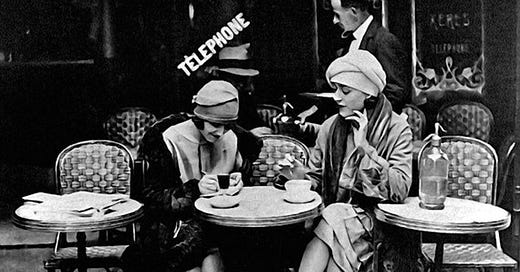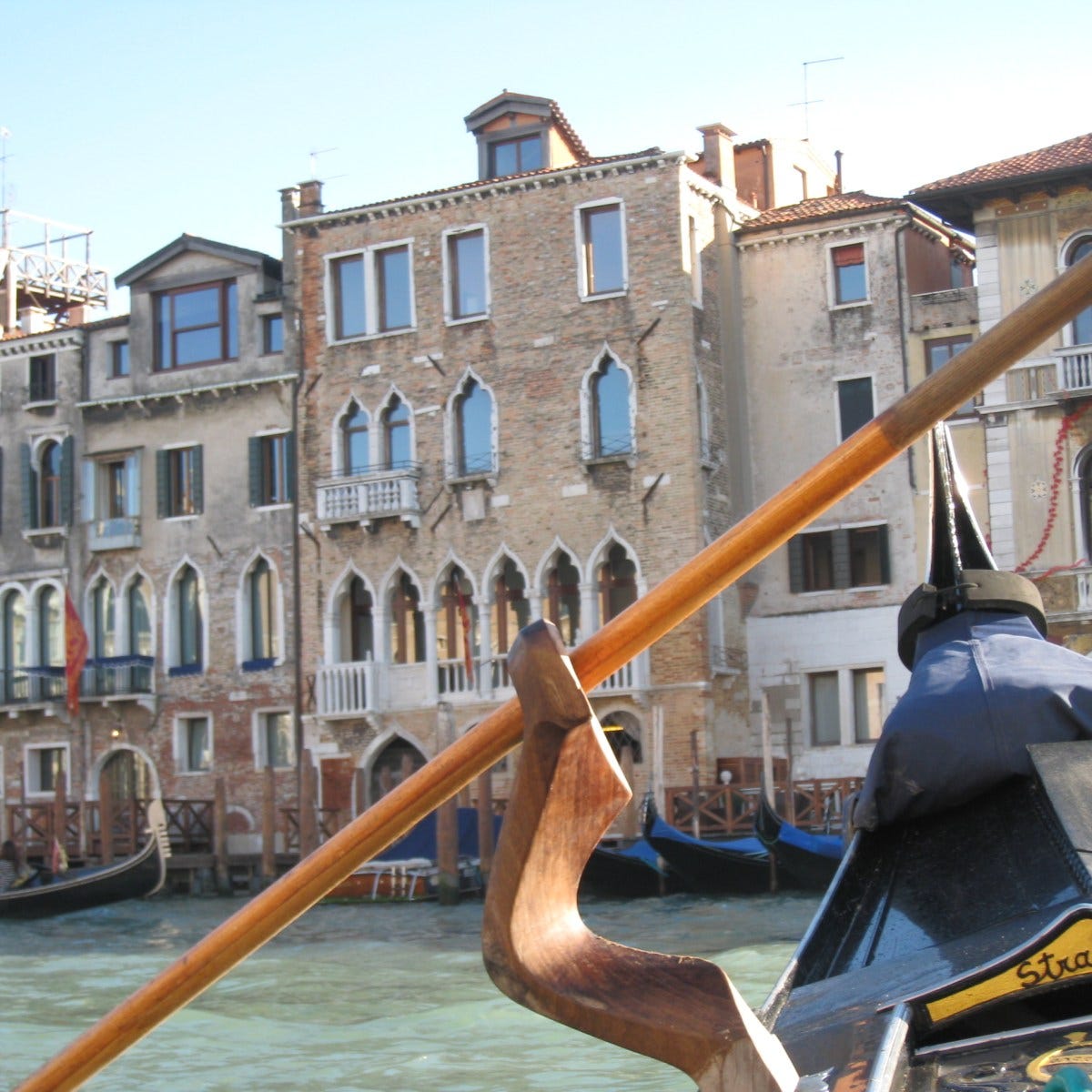Audacious Women, Creative Lives is a newsletter sharing inspiring stories of women writers and artists. It is also a community supporting and inspiring women to live bold creative lives.
Each post is free for all to read, although I certainly welcome paid subscribers who support my mission and would like to see this community grow into a space for workshops, meetings, perhaps a reading group—there are so many possibilities!
“We travel, some of us forever, to seek other states, other lives, other souls.”
― Anaïs Nin
I have travel on the brain again, since I am currently in Italy co-leading a group following in the footsteps of the nineteenth-century American writer Constance Fenimore Woolson, who lived and traveled throughout Europe for the last fourteen years of her life.
I haven’t written much about the key role that travel and expatriate life have played in the lives of so many women writers and artists. In the nineteenth century, unprecedented numbers of women took advantage of advances in travel technology to sail across the ocean in search of the Old World’s treasures. Artists such as Harriet Hosmer and Edmonia Lewis went to Rome to study sculpture. Mary Cassatt and May Alcott went to Paris to study painting. Margaret Fuller and Constance Fenimore Woolson found new material as writers in Italy. Like Woolson, many of women found greater freedom abroad and stayed.
In the twentieth century, the numbers of women flocking to France, in particular, mushroomed. Consider the lives of women writers such as Edith Wharton, Gertrude Stein, Kay Boyle, Djuna Barnes, Natalie Clifford Barney, Mina Loy, and Jean Rhys—as well as many artists, including Berenice Abbott, Leonora Carrington, Vanessa Bell, Romaine Brooks, and Lee Miller. For all of these women, France, and particularly Paris, offered unparalleled opportunities for them to grow as writers and artists.
The Uses of Travel
Simone de Beauvoir writes movingly about her first experience of traveling outside of France in her memoir The Prime of Life. She traveled to Spain with Sartre, who, she says, “was not so gluttonous for experience” as she was. While he was content to sit in the plaza smoking all afternoon, she was itching to be out and about, making discoveries.
Once someone asked her, “What’s the use of traveling? You can never get away from yourself.” But maybe that is exactly what we need! It’s what I needed—in a big way—when I sold my house and left for Europe for a year of travel. I needed to get as far away from my old self as possible in order to discover a new self—or the self I was before “life” got in the way.
Beauvoir got away from herself, finding that travel provided transcendent experiences, moments when time stood still. She describes this beautifully in a passage about Avila, where she would open her shutters and look out at the city in the morning light: “Instantly past and future vanished, leaving nothing but a splendid immediacy—I and these ramparts were one and the same, something outside time.”
Travel became a key to her own development as a writer, and she recognized its lack in the lives of most women. In The Second Sex, Beauvoir writes that women’s growth has been stunted by being denied the formative adventures men have long experienced:
At eighteen T. E. Lawrence went on a grand tour through France by bicycle; a young girl would never be permitted to take on such an adventure; still less would it be possible for her to take off on foot for a half-desert and dangerous country as Lawrence did. Yet such experiences have an inestimable impact: this is how an individual in the headiness of freedom and discovery learns to look at the entire world as his fief.
Very few women, historically speaking, have viewed the world as their own, a perspective the woman writer or artist needs. Virginia Woolf speaks about this in “A Room of One’s Own.” In her view, women needed not only privacy and their own money; they also needed opportunities to travel. Speaking of Charlotte Brontë, she writes,
She knew, no one better, how enormously her genius would have profited if . . . experience and intercourse and travel had been granted her. But they were not granted; they were withheld; and we must accept the fact that all those good novels . . . were written by women without more experience of life than could enter the house of a respectable clergyman.
Speaking to the woman of the future who aspires to write, Woolf says,
By hook or by crook, I hope that you will possess yourselves of money enough to travel and to idle, to contemplate the future or the past of the world, to dream over books and loiter at street corners and let the line of thought dip deep into the stream.
The Creative Stimulus of Travel
If you know The Artist’s Way, by Julia Camerson, then you know about the artist’s date, which gets much less attention than morning pages, but is key to any creative life. Cameron encourages us to spend at least an hour a week out in the world experiencing something new or stimulating. While morning pages turn us inward, the artist’s date turns us outward. “We set our dial to receive,” she says, feeding “our creative work by replenishing our inner well of images and inspiration.”

What is travel if not an extended artist’s date? Talk about refilling the well! Your senses are filled with so many new stimuli. In an article titled “For a More Creative Brain, Travel,” the journalist Brent Crane explains that studies have shown how creativity is stimulated by the rewiring of the brain that occurs when people travel to new cultures. “Neural pathways are influenced by environment and habit, meaning they’re also sensitive to change,” Crane writes. “New sounds, smells, language, tastes, sensations, and sights spark different synapses in the brain and may have the potential to revitalize the mind.”
The Benefits of Solo Travel, in Particular
It seems likely that such benefits are awarded particularly to the solo traveler. Cameron insists that the artist’s date is a “solo expedition.” You are taking your brain on a date. If you are with someone else, “[y]our consciousness is constantly monitoring their consciousness,” Cameron says. You wonder, are they enjoying this? Do they think this is as cool as I do?
The same applies to travel. There’s an interesting passage in Daphne du Maurier’s Rebecca where the narrator reflects that “places are so much lovelier when one is alone.” If she were with a friend, they would be talking about seeing a mutual friend, while “the bluebells beside us [go] unnoticed, and the pigeons overhead unheard.”
Then she treads into dangerous territory when she thinks that she doesn’t even want her husband, Maxim, with her. If he were there, she would “have been watching him, watching his eyes, his expression. Wondering if he liked it, if he was bored. Wondering what he was thinking.” This realization is disturbing, threatening even. It felt “disloyal, wicked” to want to be alone, without him. “Maxim was my life and my world,” she reminds herself. Even thinking that the world is there for her to savor triggers guilt. She must experience it with and through him—he is her world, not the real world outside.
Although more women are traveling solo than every before, our numbers remain low. Is the reason for that this lingering feeling of guilt for wanting our own unmediated experiences? Guilt for taking the alone time we need to see something new and different, to stimulate our senses and open new neural pathways?
When I traveled alone to France in August 2021, I had a pleasant afternoon wine tasting at a winery in the Loire Valley with the vintner’s wife. She was describing the various wines to me and then she asked, out of the blue, “Vous êtes toute seule?” Was I “all alone”? The question itself indicated wonder, fear, curiosity. Then, when I said yes, she asked if I wasn’t afraid.
“I wouldn’t be sitting here with you if I was,” I said. “I’d be at home watching TV.” And what a shame that would have been.
The vintner’s wife, as she had introduced herself, must imagine traveling solo as lonely and frightening. It has been lonely at times. (Rarely has it been frightening in Europe.) But after that trip, I decided I would sell nearly all I owned and embark on a whole year (or more) of travel and living abroad—toute seule.
As you read this, I’ll be in Florence or Rome, but not alone. I’ll be in the company of other writers and readers who love women writers and Constance Fenimore Woolson, in particular. I’ll share a post about her soon.
In the meantime, I’d love to hear your thoughts about artist’s dates and women’s reluctance to travel alone. (And next week I’ll send out a thread where we can discuss our travels even more.)
Until then, I’ll see you in the comments!
Best,
Anne
P.S. If you enjoyed this post, please click on the heart at the bottom or the top of this email. It helps others discover Audacious Women, Creative Lives. And makes my day!









I think a lot on the times that I traveled to NYC for work in the past, and the thrill of being anonymous around so much life going on--it felt immersive, protective, and incredibly freeing. One of the best dates I ever had was solo for dinner and then a broadway show. I sat in a box and joined in with two other strangers who were also delighted, and it was the best, as I walked back to the hotel smiling and watching the nightlife in the city. I went to Scotland for grad school alone and it was a similar feeling--while I had flatmates, much of my daily wanderings and research was solo and it was incredibly fulfilling, to notice, to be aware, to be both part of and yet observer at the same time. It allows for daydreaming, which we get far too little of. I love thinking about those times, and appreciate so much what you are sharing and encouraging by writing about your own experience. 💜
Oh, yeah, sister: alone is the way to go. Heightened discovery, confidence, excitement, wisdom, growth are results that can't be achieved otherwise.